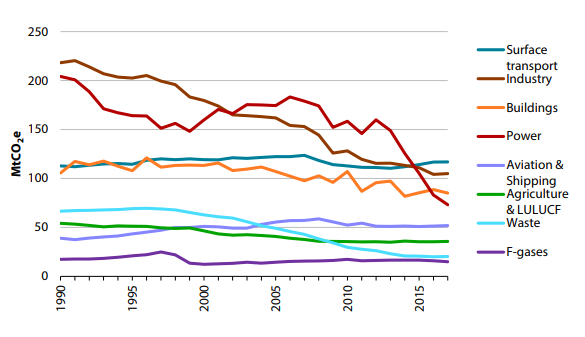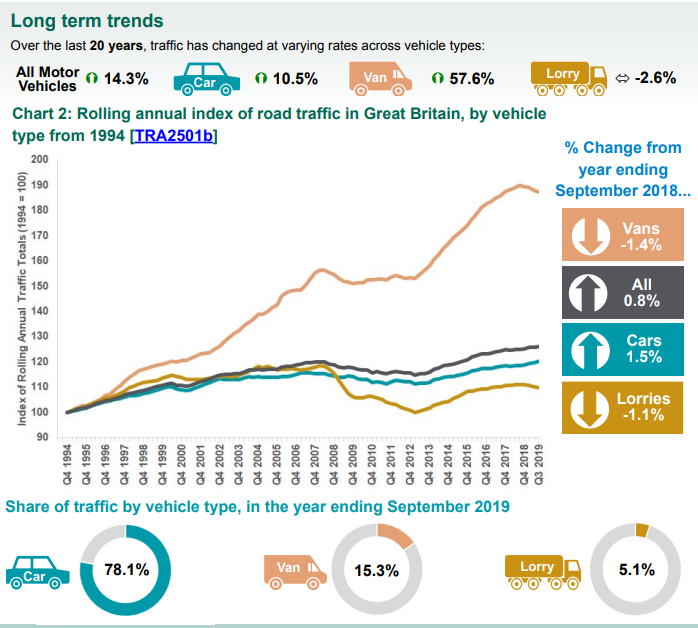

Increased traffic on the UK highway network casts doubts over 2050 net zero carbon emissions targets.
Join other savvy professionals just like you at CIHT. We are committed to fulfilling your professional development needs throughout your career
A statistical release by the Department for transport shows all motor vehicle traffic increased by 0.8% compared to the year ending September 2018, in the year ending September 2019:

Source: DfT statistical release
It appears that we are on a continuing upwards trajectory for vehicle traffic in the UK. Continued increased traffic is concerning as transport is now, by sector, the largest emitter of greenhouse gases in the UK; emissions from transport are now 4% higher than in 1990. Although vehicles have become more fuel efficient, this has been offset by increasing travel demand; and with an increasing demand for SUVs, that due to their size and aerodynamics, has challenged progress with reduction in vehicle emissions: car choice plays a vital role in reducing CO2 emissions. 

Source: Committee on climate change
The ‘peak car’ theory argues that future car use per person will remain static or decline. National statistics indicate that average car miles per person in Britain has levelled off since the 1990s, even though there was steady economic growth from the mid-1990s to 2007. After the dip, rise and levelling of car use caused by the 2008 recession car use should remain static or decline under peak car theory.


Source: DfT statistical release
Long term trends by mode shows that van use has risen considerably since 2012. This could be partly attributed to a cultural shift towards increased internet shopping in the UK resulting in increased deliveries. The national office of statistics reports that the internet sales as a percentage of total retail sales has risen by nearly 10 percent from 2012 to 2018. However, van and lorry traffic decreased by 1.4% and 1.1%, respectively from 2018 to 2019. This is likely to be a combination of social and cultural factors including Brexit uncertainty.
The continuing increase in vehicle traffic puts doubts over peak car theory. Social, cultural and spatial factors will be increasingly important in determining the overall amount and modes of travel in the future.
CIHT conducted a project in 2015/16, CIHT FUTURES, that explored the implications of different future scenarios for transport policy and practice. One finding from the consultation with 200 CIHT members was that experts are becoming increasingly uncertain about future levels of vehicle traffic.
CIHT launched a Climate Pledge and within the context of the climate emergency. The number of vehicles on roads, fuel types, and accuracy of predictions will be key factors in moving to the 2050 net zero target. Policies put in place by government to reduce car use per person are increasingly under focus as we move closer to the 2050 net zero target.
This blog post is not a CIHT policy position but a thought piece on the issues raised by increased road traffic.
If you have any comments on the issues raised please email us at technical@ciht.org.uk
Join other savvy professionals just like you at CIHT. We are committed to fulfilling your professional development needs throughout your career
{{item.AuthorName}} {{item.AuthorName}} says on {{item.DateFormattedString}}: